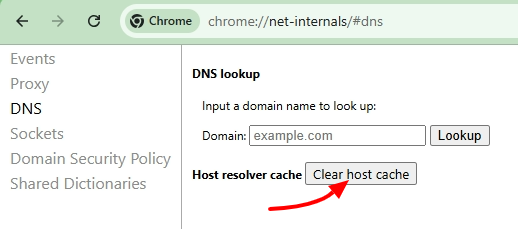 Server
Colocation
Server
Colocation
 CDN
Network
CDN
Network
 Linux Cloud
Hosting
Linux Cloud
Hosting
 VMware Public
Cloud
VMware Public
Cloud
 Multi-Cloud
Hosting
Multi-Cloud
Hosting
 Cloud
Server Hosting
Cloud
Server Hosting
 Kubernetes
Kubernetes
 API Gateway
API Gateway

How does information travel from one place to another over the internet? The answer lies in numerous techniques working seamlessly together, and one of the fundamental elements in this process is the Domain Name System (DNS). DNS acts as the internet’s address book, translating human-friendly domain names into IP addresses that computers use to communicate.
Within the DNS infrastructure, various types of DNS records play essential roles in controlling and directing this translation process to ensure data reaches the right destination efficiently. Understanding these records is crucial for anyone interested in how the internet functions under the hood.
For those who want a hands-on look at DNS operations and troubleshooting, tools like chrome://net-internals#dns in the Chrome browser provide valuable insights into DNS behavior and network activity. This helps users and administrators diagnose issues and understand how DNS records impact web connectivity.
In this knowledge base section, we will explore the different types of DNS records and their specific purposes in the DNS ecosystem.
There are several types of DNS records. Scroll down to explore:
The A record is often known as the Address record. It is one of the most essential DNS entries. It converts a domain name into the IP address of the server that hosts it.
The CNAME record is known as Canonical Name Record. It is used to create aliases for domain names. Instead of utilizing IP addresses, it connects one domain name to another. This is typically used to point many domain names to the same website. Using a CNAME record, you might refer to "www.example(dot)com" and "example(dot)com" on the same website.
MX records specify which mail server gets emails on behalf of a domain. When you send an email, then directs the sender's mail server where to deliver the message. This record assists in routing emails to the appropriate mail server.
TXT records are used to store arbitrary text data in DNS records. They have various purposes. It includes such as verifying domain ownership for services like Google Workspace or Microsoft 365, and implementing SPF (Sender Policy Framework) for email authentication. It provides human-readable information about a domain. In addition, TXT records can contain any text data, but they are commonly used for these specific purposes.
The AAAA record, like the A record. It connects a domain name to an IP address. However, the AAAA record is only used for IPv6 addresses. Further, they are longer and structured differently from IPv4 addresses. As IPv6 deployment increases–AAAA records become more critical for assuring connectivity over the newer protocol.
NS records describe which name servers are authoritative for a certain domain. These name servers are in charge of keeping and providing DNS information for the domain. When a user requests a domain name, the DNS resolver first contacts the name servers mentioned in the NS records to obtain the required DNS information.
PTR records are used in reverse DNS lookups. This is because an IP address needs to be converted to a domain name. While A records map domain names to IP addresses. Whereas PTR records do the inverse by mapping IP addresses to domain names. In addition, PTR records are often used for troubleshooting and determining the validity of email senders.
Having clear knowledge of your DNS records allows you to:
◾ Ensure your website is reachable and loads correctly from anywhere in the world
◾ Configure email systems to work without issues or spam problems
◾ Improve domain security by setting up authentication records such as SPF, DKIM, and DMARC
◾ Troubleshoot connectivity problems by verifying correct DNS configurations
◾ Website accessibility: DNS ensures your website loads correctly.
◾ Email delivery: MX and TXT records prevent emails from being marked as spam.
◾ Security: Records like SPF, DKIM, and DMARC help authenticate your domain.
◾ Scalability: Load balancing and CDN services depend on proper DNS settings.
You can check your DNS records using various online tools or through your domain registrar’s control panel. Additionally, for those using Chrome, tools like chrome://net-internals#dns offer network diagnostic features to investigate DNS lookups and cache, helping you understand how your DNS records are being accessed and used.
Google Chrome has a built-in tool to view and troubleshoot DNS:
◾ Open Chrome and type chrome://net-internals/#dns in the address bar.

◾ You will see a DNS section with cached entries.

◾ Click “Clear host cache” to flush DNS if you face loading or resolution issues.
◾ Use this tool to confirm whether your browser is pulling the latest DNS records.
Note: Chrome has moved DNS-related tools into chrome://net-export/ in newer versions, but chrome://net-internals/#dns still works on older builds.
Understanding DNS records is critical for anybody operating a domain or dealing with internet technology. These records are critical in ensuring that internet traffic is properly routed and services operate as intended.
Now, you will be able to traverse the complexity of the internet's architecture and fix difficulties as they emerge. Understanding DNS records allows you to make educated decisions and have a pleasant online experience. For more knowledge, contact our team of experts.

Let’s talk about the future, and make it happen!
By continuing to use and navigate this website, you are agreeing to the use of cookies.
Find out more


